Wonderful Whitby
Whitby Jet
During the Jurassic period, over a 180 million years ago, when the Whitby area was covered in warm tropical waters, and the river deltas brought down the fallen Monkey-Puzzle trees from further inland, they came and rested on the sea floor. Over the millions of years, when sand and mud rested on the top, they were compressed and fossilised.
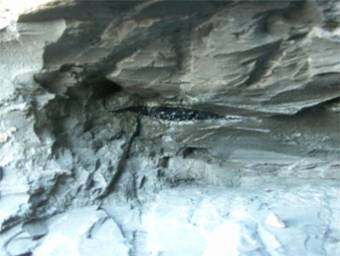
Seam of Whitby Jet
(photo by Robinson's Jet, Sandgate)
Over time when the land formations shifted and this material came to the surface as Whitby Jet, seams were found along the North Yorkshire Coast. Much of the Whitby Jet was found on the sea shore, but larger seams were found in the rock cliffs resulting in the introduction of many jet mines along the coast from Staithes to Robin Hoodsís Bay.
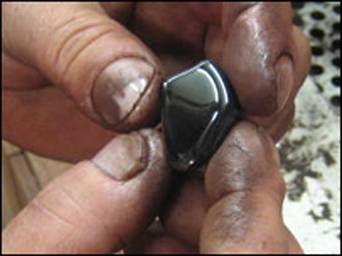
Jet on it's way to becoming jewellery
(photo by Robinson's Jet, Sandgate)
Whitby Jet, because it is, in fact, from wood, is lightweight and soft, and easily carved into Jet Jewellery. Jewellery has been carved from Whitby Jet, from as long ago as the Bronze Age. The Romans too, made use of it as decoration and adornment, as Whitby Jet can be found in Roman excavations in York.
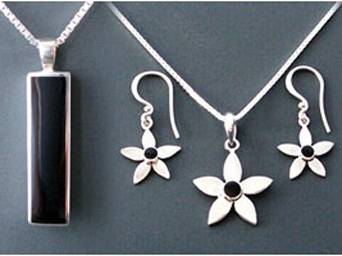
Whitby Jet Jewellery
(photo by Robinson's Jet, Sandgate)
In the Medieval times, Whitby Jet was mainly used for ecclesiastical purposes, crosses etc. The introduction of lathe machinery in the jet industry, in the early 1800ís, enabled the mass production of jet jewellery. There were 50 workshops, rising to approximately 200 workshops by 1873, employing 1500 men.
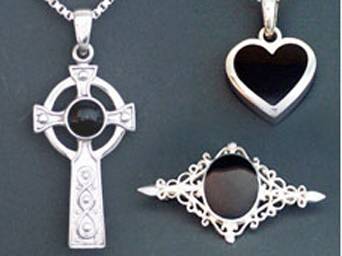
Whitby Jet Jewellery, Robinson's Jet, Sandgate
The death of King George IV, in 1830, and the Duke of Wellington in 1852, brought Whitby Jet to the fore, as it was considered dignified for the court jewellery. When Price Albert died in 1861, Queen Victoria wore jet in mourning, and the Victorians copied her, making Whitby Jet jewellery much sought after. Whitby Museum in Pannett Park has a fine collection of Whitby Jet jewellery and Whitby Jet carvings.
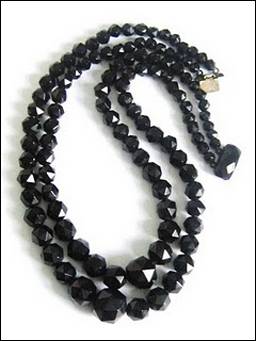
Victorian Jet Jewellery
There are many imitations of Whitby Jet, either plastic, glass, resin or bakelite. True Whitby Jet is warm to the touch, has a lovely sheen to it when polished, and is quite light to hold. In its raw state it can resemble coal but whereas coal is quite hard, jet cracks easily and is susceptible to scratching. If it is drawn across a piece of dry sandstone, or fine sandpaper, it leaves a brown, not black, streak. If the streak is black it is coal. Generally the lighter colour the streak , the higher quality the jet.
